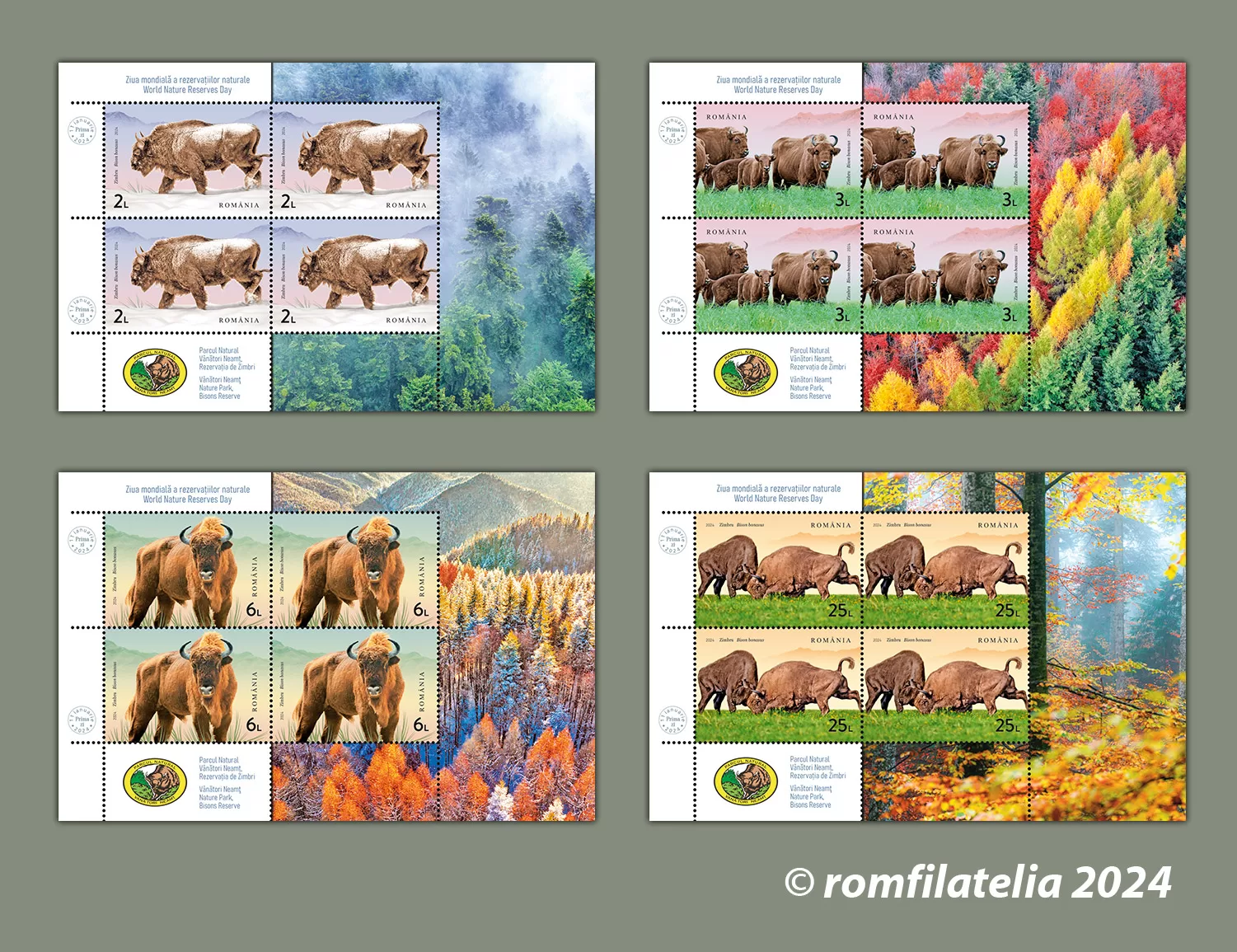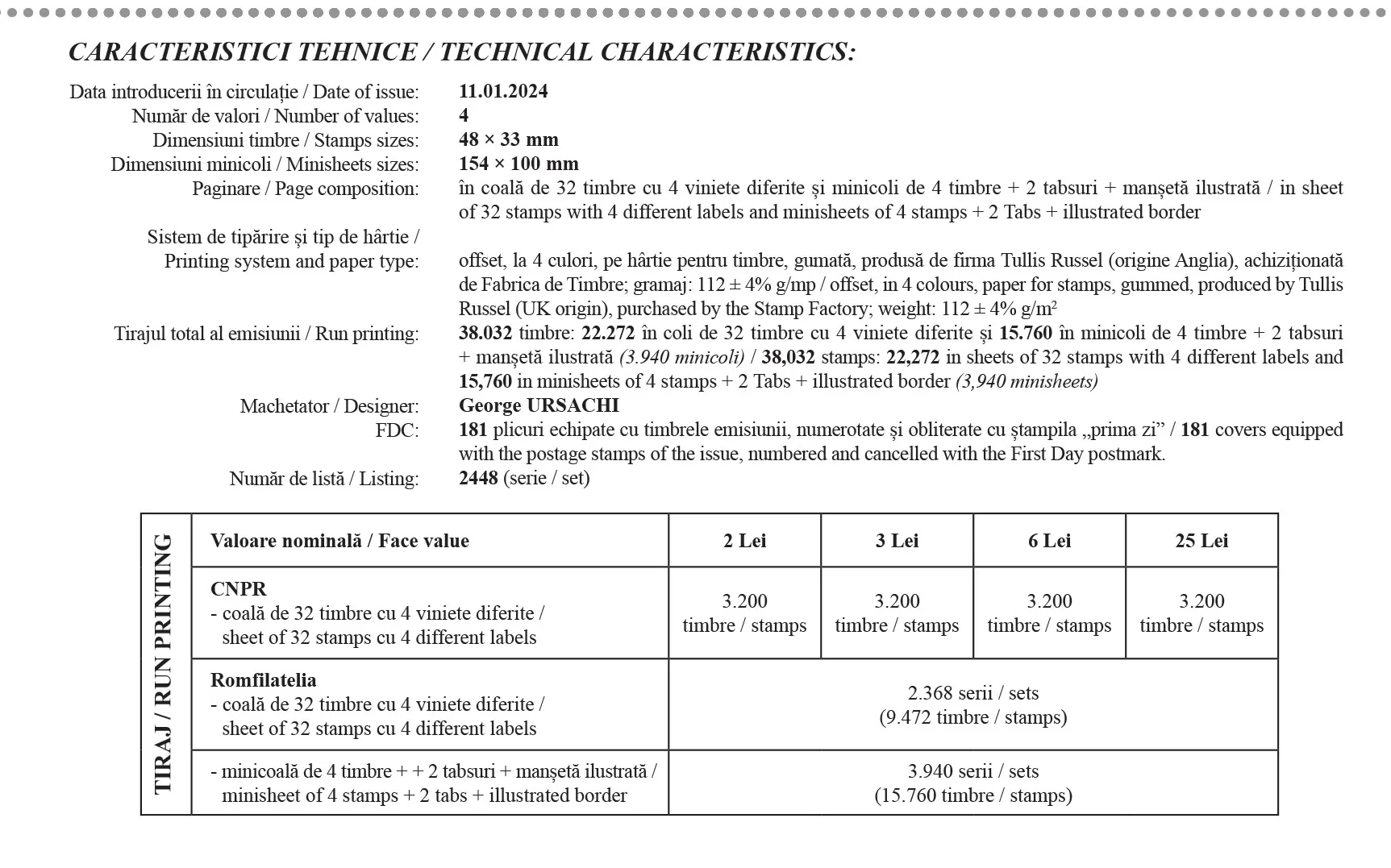 A new issue of postage stamps, with fauna as subject, is developed by Romfilatelia and introduced into circulation on the occasion of the “World Nature Reserves and National Parks Day”, on Thursday, January 11th, this year.
A new issue of postage stamps, with fauna as subject, is developed by Romfilatelia and introduced into circulation on the occasion of the “World Nature Reserves and National Parks Day”, on Thursday, January 11th, this year.
It is the first day of the world’s ecological calendar, chosen at the initiative of several environmental organizations to mark the 84th anniversary of the establishment of the Barguzinsky Nature Reserve in Russia in 1997. It should be noted that in May 1927, the first two nature reserves were established in our country, in the area of Dobrogea.
Protected areas and community conservation areas are a way to directly contribute to the conservation
of biodiversity and nature in general.
At the national level, more than 900 nature reserves and nature monuments have been designated. Of these, Romsilva manages 22 national and nature parks, and over 190 nature reserves and nature monuments.
The postage stamps of the World Nature Reserves Day issue show in their images the wisent belonging to the species Bison bonasus, a species of bison found in Europe. It appears described for the first time in the scientific literature by Carl Linneé, in 1758. In 1996, it was included in the category of endangered species. The wisent is the largest land mammal in Europe, once present throughout the continent except for Spain, Italy and northern Scandinavia.
In Romania, wild wisents are found in the Vânători-Neamț Nature Park, the Țarcu Mountains and the Făgăraș Mountains. Although out of the category of vulnerable species, wisents are in great need of interventions for conservation.
The wisent or European bison is part of the category of ruminants, belonging to the Bovidae family, widespread in the past in the regions of the northern hemisphere. It has a length of 2.9-3 meters and a height of approx. 1.9 meters, weighing from 300 to 930 kg. It is taller than its close relative the American bison. It is a herbivorous animal.
The last wisent in Moldavia was hunted in 1762, and in Transylvania in 1790. In 1927, less than 50 wisents remained in the world, in some zoos. They have been successfully reintroduced into the wild since 1951.
In Romania, wisents can be seen in the Dragoș-Vodă Reserve in Vânători-Neamț. Wisents were introduced to Romania in 1958 when the first two specimens were brought from Poland and kept in a reserve in Hațeg. The idea of free-ranging wisent in Romania materialized in 1999, through a programme supported by the World Bank and the European Union.
The images of the postage stamps with the face values of Lei 2, 3, 6 and 25 show wisents in various poses captured in a free-range state in the Vânători-Neamț Reserve, and the imprints of the mini-sheets reproduce unique images of the landscape of the territory where they live.
Romfilatelia thanks for the documentary support Mr. Sebastian Cătănoiu, Director, PhD. and eng. Lică Balmoj, representatives of the National Forest Administration – ROMSILVA within the Vânători Neamț Nature Park Administration and Mr. Gheorghe Popa, photographer.



